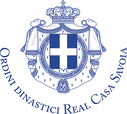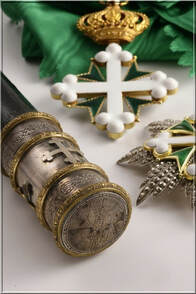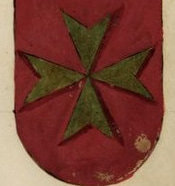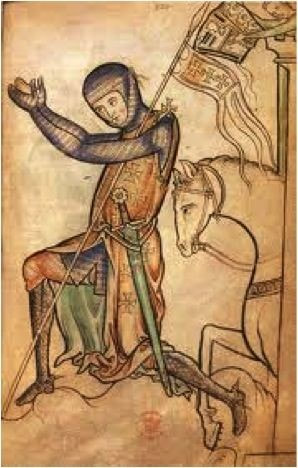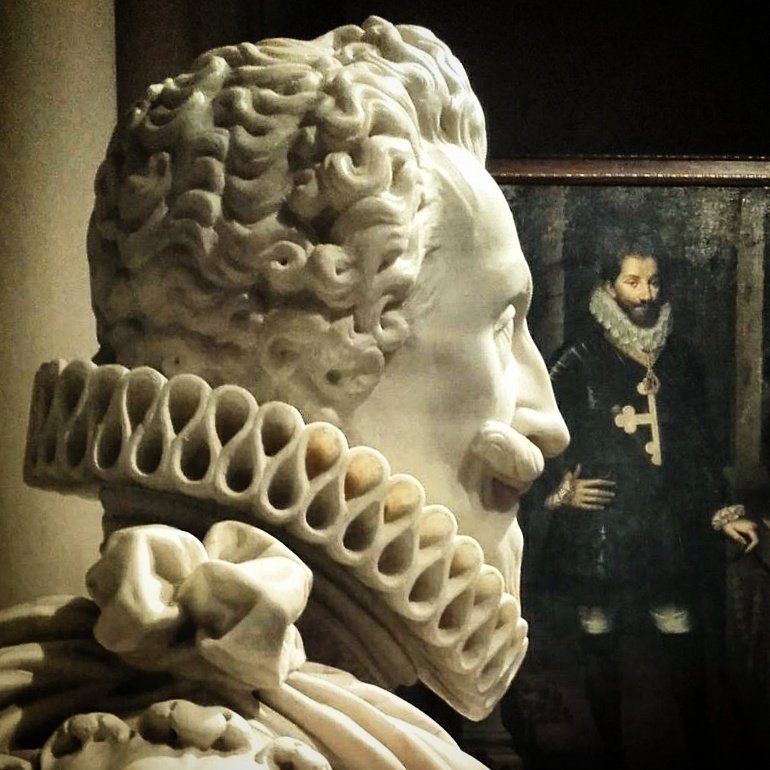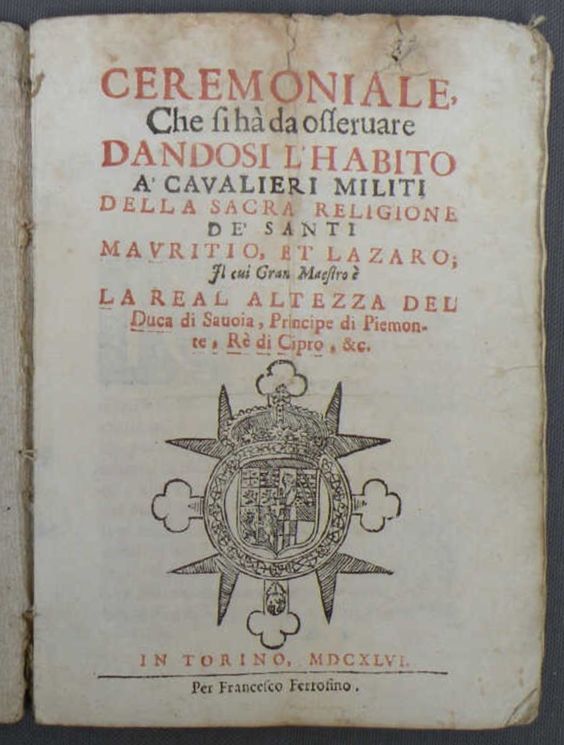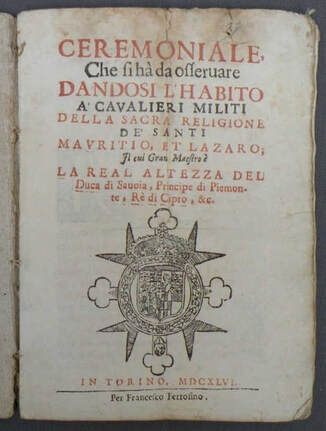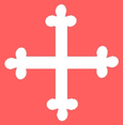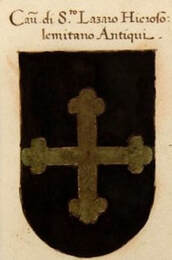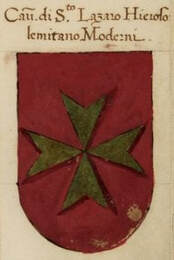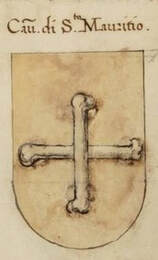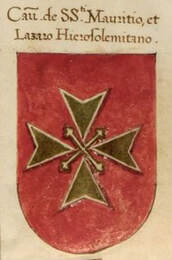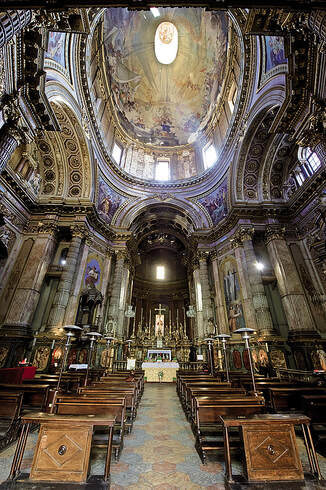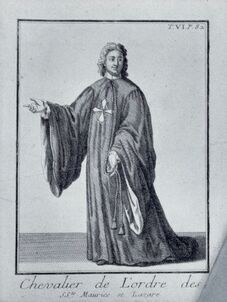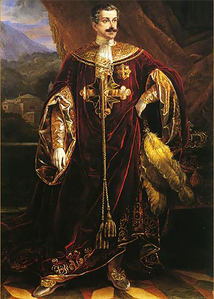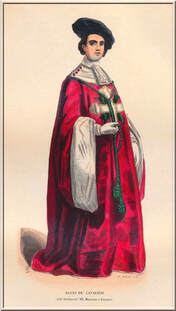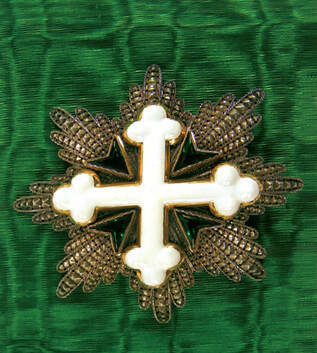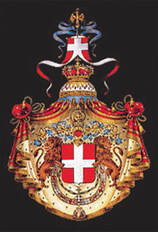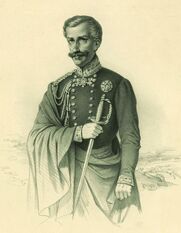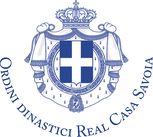American Delegation of Savoy Orders
HISTORY OF THE ORDER OF SAINTS MAURICE AND LAZARUS
|
The Order of Saints Maurice and Lazarus (Ordine dei SS Maurizio e Lazzaro, often shortened to the Ordine Mauriziano) is a combination of two ancient orders. Amadeus VIII, first Duke of Savoy (reigned 1391 — 1440), founded the Order of St. Maurice in 1434 when he retired to the Castle of Ripaille on the south shore of Lake Geneva. The Order consisted of a few knights he carefully selected to advise him on such affairs of state as he continued to control. The Order was named after St. Maurice who had previously been adopted as a patron saint of the Savoy dynasty. Legend has it that St. Maurice, an officer of the Roman Empire’s Theban Legion in Alpine Gaul, was martyred (c. 300 AD) near what is today the Swiss town of Saint Maurice d’Agaune, south east of Lake Geneva, then Savoy territory. Over a century after the death of Amadeus VIII, the Order of St. Maurice, under the leadership of Emmanuel Philibert (lived 1528 - 1580), fourth Duke of Savoy and great-grandson of Amadeus VIII, was revived in 1571 with a military and religious character, by Pope Pius V. The following year it was united to the Order of St. Lazarus by Pope Gregory XIII. The hereditary Grand Mastership of the newly combined Order of St. Maurice and St. Lazarus was conferred upon the Dukes of Savoy in perpetuity. Over a century after the death of Amadeus VIII, the Order of St. Maurice, under the leadership of Emmanuel Philibert (lived 1528 - 1580), fourth Duke of Savoy and great-grandson of Amadeus VIII, was revived in 1571 with a military and religious character, by Pope Pius V. The following year it was united to the Order of St. Lazarus by Pope Gregory XIII. The hereditary Grand Mastership of the newly combined Order of St. Maurice and St. Lazarus was conferred upon the Dukes of Savoy in perpetuity. The Order of St. Lazarus had a longer though more episodic history. It had been founded as a hospitaller order, in the form of a military and religious community, at the time of the Latin kingdom of Jerusalem. Its primary object was assisting lepers, many of whom were among its members. Popes, princes and nobles endowed it with estates and privileges, including that of administering and succeeding to the property of lepers. However, with the advance of the Saracens the knights of St. Lazarus left the Holy Land and Egypt and eventually migrated to France (1291) and Naples (1311), where they founded leper hospitals. (A confinement house for patients suffering from communicable diseases is still known in Italy as a "lazaretto.") |
The Order of St. Lazarus in Naples, which alone was afterwards recognized by The Holy See as the legitimate descendant of the Jerusalem community, was empowered to seize and confine anyone suspected of leprosy. In the 15th and 16th centuries dissensions broke out among the knights and the order declined until following Giannotto Castiglioni, the position of Grand Master went to Duke Emmanuel Philibert of Savoy in 1571. A year later, the orders of St. Lazarus and St. Maurice were incorporated by Pope Gregory XIII into one community, the members of which were to devote themselves to the defense of the Holy See and to fight its enemies as well as to continue assisting lepers. The galleys of the order subsequently took part in various expeditions against the Turks and the Barbary pirates. Leprosy, which had almost disappeared in the 17th century, broke out once more in the 18th, and in 1773 a hospital was established by the Order of St. Maurice and St. Lazarus at Aosta, made famous by Xavier de Maistre’s tale, Le Lépreux de la cité d’Aoste. By the time that statutes were published in 1816, the order had lost its military character. It was reformed first by Charles Albert of Savoy, King of Piedmont, in 1831; and later by Victor Emmanuel II of Savoy, King of Italy, in 1868 and by Prince Victor Emmanuel IV of Savoy in 1996 and again in 1999. After the unification of Italy in 1861 and the proclamation of the Italian Kingdom under the Savoy dynasty, the knighthood of St. Maurice and St. Lazarus became a state dignity conferred by the King, as hereditary Grand Master, on persons distinguished in the public service, science, arts and letters, trade, and above all in charitable works, to which its income was devoted. The Italian throne was formally abolished by referendum in 1946 and a republic was instituted in its place. Today the order is conferred by its 17th Grand Master, H.R.H. Prince Victor Emmanuel, Duke of Savoy, to recognize those who support philanthropic causes and have contributed to the benefit of mankind through good works, the arts and letters, sciences and humanitarian disciplines. The Holy See recognizes it as a Dynastic Order, although recipients need not be Roman Catholics. The Chancellery of the Order is based in Geneva. In 2001, the Grand Master appointed his son, H.R.H. Prince Emmanuel Philibert of Savoy, whose ancestral namesake had been the first Grand Master of the Order, to serve as Grand Chancellor. |
HISTORY OF THE ORDER OF SAINTS MAURICE AND LAZARUS
BY
JAMES C. RISK
|
The great body of the Orders of Chivalry can be divided into three groups for the purpose of historical consideration. The first and the oldest of these includes the Hospitalier and Crusading Orders. The best known example of the type is the Order of St. John of Jerusalem, generally called the Order of Malta. It was actually in existence shortly before the Crusades began. The distinguishing characteristic of the organizations in this group, however, is not so much their age or the continuity of their history, but the possession, at one time or another, of individual sovereignty. While this Sovereignty was frequently territorial during the formative periods of these Orders, it is entirely a legal concept today.
Knightly fraternities in the second grouping have been called the Great Orders of Chivalry. Founded in most cases by a Sovereign Prince, they survive in our time as the most signal honors that can be given by the country to which they belong. They contain only one class, comprising a very limited number of members. The oldest and most distinguished is the Garter in England. The Garter and the Elephant of Denmark are the only Great Orders in active use today. Among those recently extinct, or at any rate no longer recognized by the country of their origin, are the Golden Fleece of Spain and Austria and the Annunziata of Italy. The third category contains the Orders of merit, awarded for a variety of services in either a civil or military capacity. The best known of the distinctions in this group is the Legion of Honor of France. The Orders of merit are all divided into several degrees, or classes. In view of the various upheavals that have shaken the civilized world in almost 800 years since the Order of Malta appeared in Palestine, it is remarkable how little interchange there has been between any of the members in the categories just described. Orders have died or been forgotten without formal abolition but few have changed their basic characteristics in a way that would permit their moving from one group to another. One of the outstanding exceptions to the rule is the Order of Saints Maurice and Lazarus, until 1946 the highest ranking award for merit in the hands of the Italian Crown. Although an unusual combination of two aristocratic institutions, joined together in the 16th Century, it survived the French Revolution to become a democratic Italian distinction resembling the French Legion of Honor. When King Humbert II left Italy in 1946, and the Order ceased being used, it could claim a longer pedigree than any other in the class in which it then found itself. Such historical agility is bound to the student. The nature of the insignia makes the acquisition of good specimens a real challenge to the alert collector. For this reason I feel that a discussion of the Order and the evolution of its distinctive Badge will be of interest to the readers of the Review. |
I will not devote any particular attention to the early history of the two Orders of St. Maurice and St. Lazarus. St. Maurice has long been regarded as the Patron of the House of Savoy. When Amadeus VIII, a widower stricken in years, retired to the Monastery of Ripaglia near Lake Geneva in 1434, he gathered a small group of similarly circumstanced old gentlemen to keep him company. On October 16 of the same year he formed them into a regular company he called the Knights of St. Maurice. The new Knights were hermits living a largely religious and retired life rather than active military men. They wore gray robes carrying a white cross in cloth, each arm of which was "trifoliate" at the end. This became the distinctive Cross of St. Maurice and later appeared on quite a number of coins issued by the rulers of Savoy. The attempt of Amadeus VIII to spend his last days in quiet contemplation was interrupted by his election to the Papacy, an office he later resigned. The Order he founded does not seem to have had a particularly active existence after his death in January, 1451.
During the latter part of the 12th Century, an Hospitaller Order appeared in the Holy Land named after St. Lazarus, the Patron of Lepers. As long as the Crusaders were able to maintain themselves in Palestine, the Knights of St. Lazarus devoted their efforts to aiding the victims of leprosy. The Knights of St. Lazarus went back to Europe when Islam finally forced the Christians from northern Africa. Unlike the Order of Malta they were not able to found a territorial state of their own. The individual members rendered honorable service in leper hospitals in the next three hundred years but the Order gradually disintegrated and fell into disrepute. By the middle of the 16th Century both Orders had a very tenuous existence. At that time, however, a new spirit began to animate Catholic Europe. The Church had reeled under the blows dealt by the Protestant Reformation for almost a hundred years. Now she showed such signs of vigor that a movement known as the "Counter Reformation" inspired both the Church and the Catholic Princes. At the same time the danger always implicit in Islam had become a very pressing one. The coast of Italy and Mediterranean Europe were ravaged by Turkish and Mohammedan Corsairs. At this juncture Emmanuel Philibert, one of the strongest members of the House, became Duke of Savoy. As an Italian Catholic Prince and able soldier, he was naturally interested in preventing the spread of the Reformation within his dominions and deeply concerned about the devastation caused by the activity of the Corsairs. In the interest of combating the spread of Protestant doctrine he revived the Order of St. Maurice, whose Knights were to found hospitals and act as missionaries of the Counter Reformation. His project received the Blessing of Gregory XIII on September 16, 1572. Meanwhile the Order of St. Lazarus had come to life. Emmanuel Philibert reached an agreement with the Grand Master of the organization. The Pope ratified it by a Bull dated November 13, 1572, conferring the Grandmastership of the Order on the Duke of Savoy. |
|
The Knights of the united fraternity were to give excellent service against the Turks. The Order had two galleys, the "Piemontessa" and the "Margarita," in operation the next year, following the naval example set by the Knights of St. John. As the Turks were gradually forced back into Asia Minor during the next century, the purely military activities of "l’Ordine Mauriziano," as it was often called, were replaced by the building and operation of Hospitals in strategic parts of Piedmont. This remained its principal activity until the French Revolution intervened to turn 18th Century Europe upside down after 1792. When Charles Emmanuel IV was forced to retire to the island of Sardinia in 1796, the Order went with him. Shortly after Victor Emmanuel I’s restoration to the throne in 1815 several important changes were instituted, indications of even greater ones to come. Before proceeding any further, it will be necessary to explain just what kind of organization the Order was before 1815.
During the period just mentioned, the Order of St. Maurice and Lazarus had much in common with the Order of Malta, except that the Grand Master was primarily Sovereign Ruler of a compact North Italian Duchy, later raised to the dignity of a Kingdom. It was a State within a State, with its own lands, internal civil and criminal administration and an Army and Navy, all controlled by dignitaries of the Order and independent of the other government in Piedmont. The members were divided into two classes, called Knights of the Great Cross and Knights of the Small Cross. They had to be of noble birth and request admission to the Order. After their claims had been accepted by the Council, they paid a fixed sum "in passage money" to the Treasury and had to serve five years in the Army or Navy of St. Maurice. Their lives had a semi-religious character. Those who donated a sufficient amount of property to found a Commandery (a financially self supporting administrative unit) were called Commanders. The title did not represent a higher grade than that of simple Knight. They were merely administrators of a Commandery with special rights. Their eldest sons could inherit their Knighthood in the Order and eventually the Commandery, with the income attached to it. In the course of time the Order acquired a considerable amount of property although its actual independence of Savoy, whose King was Grand Master, naturally declined over the years as its functions became less military and more charitable in nature. Throughout this period the full title for the organization was long and impressive. It was, properly speaking, "The Sacred Religion and Militia of Saint Maurice and Saint Lazarus." |
EVOLUTION OF THE COAT OF ARMS OF THE ORDER OF SAINTS MAURICE AND LAZARUS
FROM AN ANCIENT TEXT BY GIACOMO FONTANA, MODENA 1605
FROM AN ANCIENT TEXT BY GIACOMO FONTANA, MODENA 1605
|
Victor Emmanuel I issued new Statutes on December 27, 1816. They made some concessions to changed times. While members continued to be divided into two grades, each Grand Cross and Knight could be either of Justice or of Grace. The former had to be noblemen of ancient lineage, maintaining something of the religious character of the earlier Knights. The latter could be admitted for distinguished services, largely of a military or diplomatic nature. At this time, too, we find the First Secretary of the Grand Magistracy emerging as the most important official in the Order responsible to the King for the appointments of new members. Further changes took place on December 9, 1831, Charles Albert added the actual grade of Commander to the Order. The new regulations took pains to explain that a Commander and the administrator of a Commandery were not one and the same thing. The latter had no right to the title as long as he remained a simple Knight. At the same time the grade of Grand Cross "with Grand Cordon" was established. Strangely enough the old Knights of the Grand Cross did not automatically become Knights Grand Cross with Grand Cordon. Many of them never received the new dignity. We have the curious spectacle of a subordinate body of Knights Grand Cross within the Order whose existence was based on earlier Statutes then abolished and who were not recognized by the revised regulations. They were left to disappear in the natural course of time.
As the 19th Century progressed the Kingdom of Sardinia, as the dominions ruled by the House of Savoy were called, became involved in the ground swell of the movement that led to the unification of Italy under one King. These events were reflected within the Order. Charles Albert was defeated by the Austrians in 1848 and abdicated in favor of his son Victor Emmanuel II, late to become King of all Italy. In a regulation dated March 16, 1851, the new Sovereign removed the distinctions between Knights of Grace and Justice. While the grades remained the same, the membership within each was now declared to be unlimited. The custom of allowing the Cabinet Ministers to recommend a fixed number of appointments to the Order each year was established in place of prescribing the number of Knights in each class. It was in this period that the Commanderies were abolished. All property reverted to the control of the Council of the Order. On November 28, 1855, a further momentous change took place. The number of grades was increased when Commanders of the First Class were added. A little over two weeks later, on December 14th, the Order was finally divided into five classes like the Legion of Honor. The grade of Officer was introduced between that of Commander, 2nd Class, and Knight. The last basic change in these arrangements took place on February 20, 1868. At that time the titles of Grand Officer and Commander were substituted for Commander of the First and Second Class. The membership of the first four classes was fixed at sixty for the Grand Crosses, one hundred and fifty for the Grand Officers, five hundred for Commanders and two thousand for the Officers, with no limit for the number of Knights. These figures did not include Knights of the Annunziata who had the Grand Cross by right, or foreigners. Between 1868 and 1946 the only significant regulations affecting the Order were those increasing the membership gradually over the years and limiting the pensions paid some of the Knights from the Treasury of the Order. |
|
The original Badges worn by the Knights were made of cloth or silk until shortly after 1600 when the custom arose of making them in gold and enamel. When the two Orders were combined in 1572 the Cross of St. Maurice was subordinated to the green Cross of St. Lazarus. By the time it became customary to wear the insignia in enameled gold the relative size of the Crosses had been reversed. Seventeenth Century portraits indicate that the Cross of the Order must have looked very much as it still does, although the quality of the workmanship on pieces certainly declined in the interval. There has been less change in the insignia of this Order than in almost any other with which we are familiar. Even the Cross of Malta has been given a variety of embellishments over the years. The Knight’s Cross of "l’Ordine Mauriziano" worn by many of the members today must look very much as it always has for over three hundred years. While the higher grades eventually wore the Cross surmounted by a crown, no other changes in design were introduced.
Before the reforms of 1816 the Badge existed in two simple forms. The larger Grand Cross was worn around the neck hung first from a gold chain and then from a green ribbon. The smaller Cross was worn from the buttonhole of the coat. After 1816 the Grand Cross was provided with a Crown and was always worn around the neck from a broad dark green ribbon, resting centered on the breast. The Knight’s Cross was unchanged. There is one variety of Badge used in this period that remains a mystery. I have never seen it illustrated or described in any work dealing with the Order. The type was first brought to my attention while visiting the Capodimonte Palace the Royal Palace in Naples. It appears worn by the subjects of several early 19th Century portraits. The Badge in question is a Grand Cross, with the addition of a trophy of Arms above the crown. The only specimen I have seen belonged to the Archduke Ranier who died at an advanced age in 1913. This specimen is now in the Austrian Army Museum in Vienna, accompanied by a Star that probably dates from the 1850s. The only explanation I can offer for the Badge is that it may have been worn by the Grand Crosses of Justice between 1816 and 1831. The Grand Cross of Grace would then have been distinguished by the crown alone. I hope that further information may come to light as a result of my discussion. Charles Albert’s addition of the degrees of Commander and Grand Cross with the Cordon, or Sash, in 1831, finally brings the insignia within practical reach of the Collector. The new Grand Cross was exactly like the old one, except that it was worn from a sash and not around the neck. The first Star of the Order is shown in the plate. Stars of this kind, with only the cross of St. Lazarus enameled, were replaced by the more familiar type some time in the 1840s or 1850s. The exact date when the first type ceased being used is not known. The Commander’s Cross was worn without crown until 1868 and resembled the Grand Crosses worn before 1816. Since the Knights were enjoined by the Statutes to wear the insignia at all times, on May 10, 1832 the King established a small cross surmounted by a Crown for use of the Commanders when wearing informal day dress. This was followed on October 26, 1838, by the addition of the "Catanella" or small chain of the Order for the use of the Grand Crosses in informal dress. The chain was made up of crowned ciphers of the King, alternating with plaquettes of green enamel and carrying a miniature crowned Badge at the end. It was to be worn from the buttonhole. |
|
The further additions to the grades of St. Maurice in 1855 marked the appearance of the diamond shaped Star for the First Class Commanders carrying the Cross of the Order superimposed upon it. The Badge of this Class was surmounted by a crown, but the Commanders, Second Class, continued to wear theirs without the crown. The creation of the Officers in the same year was marked by the addition of a wreath in gold to the Knight’s Cross. The specimens illustrated date from 1858 and 1868 respectively. Finally, after 1868 the Commanders were given the same crowned Badge as the Grand Officers but did not wear a Star, while the wreath that marked the Badge of the Officers was replaced by a crown. Most of the insignia of the Order found today will be of this type. The early specimens shown here are from a private collection.
The fact that enamel is the predominant material in these Crosses and gold is present only in the form of an edge strap outlining the basic design makes their attribution very difficult. In my experience the enamel used on the older specimens has a rather rough, coarse appearance while the gold edge is relatively thick. The early commander’s Cross illustrated in this article is also enameled in gold, as a small chip indicates. More modern pieces are found enameled on copper with only the edging of gold. There are a few additional details, however, that the Collector can use as a guide. A large Cross without crown approximately 42 to 45 mms. in size is that of a Commander, 1832-1868. A small Cross with a heavy crown and nobbled arches is a Commander’s undress Cross, 1832-1868. The Badge of a Commander of the First Class prior to 1860 will also have this type of crown. The crowns of the Officer’s Crosses after 1868 will resemble the one shown on the Grand Cross in our illustration although, of course, smaller in size. The Stars of the First and Second Classes until 1878 are all of very fine workmanship and carefully pierced. After that date, while the workmanship is at first good, they are not pierced. The green enamel used on the St. Lazarus Cross before 1860 will generally be quite dark. It is rather light on more modern pieces. In my experience any Badge made between 1860 and 1870 is likely to show a definite fault in the green enamel of the St. Lazarus Cross below the surface. Flaking often results. In any case, all Badges of the Order are very susceptible to damage and must be handled with care if acquired in perfect condition. The color of the ribbon used has also changed radically. That accompanying the Grand Cross in the illustration is olive green. |
|
During the early 19th Century it was quite a dark pine green. In the reigns of Umberto I and Victor Emmanuel III prior to 1914 it changed again to a harsh Kelly green. By the 1930s and 40s the color was often quite light in shade. It is difficult to find the colors of the latest version of the ribbons at all attractive.
In closing I will make brief mention of the actual condition of the Order as it now exists. The Italian Government has granted those who received it before 1946 the right to wear it without any restrictions. The hospitals and other charitable activities supported by the extensive properties and revenues of the old Order are still in operation. The largest of the hospitals is in Turin. It is one of the best and most modern in Italy. In former times any member of the Order who found himself sick, while in Turin, had a right to free treatment in this hospital. In the light of present conditions the story of this knightly fraternity shows that history is certainly not without some charming ironical touches. The Order of Sts. Maurice and Lazarus were given all the possessions of the Constantinian Order of St. George when the Kingdom of Naples became part of united Italy in 1861. Now in its own turn "l’Ordine Mauriziano" has fallen by the wayside, one of the unnecessary victims of the peculiar political aftermath of the last war. Yet the best traditions of three ancient institutions are still being carried on through charitable activities made possible by their accumulated resources. These very real contributions to modern social welfare can be traced directly to the great Hospitaller Orders which were among the most useful results of the Crusades. |
James C. Risk, 1961
Editor’s Note: When Mr. Risk wrote this article in 1961 he was one of the few American citizens who had been decorated with the Order of Saints Maurice and Lazarus by H.M. King Umberto II of Italy while he was King in 1946. Following the death of the King in 1983, his son, H.R.H.Prince Victor Emmanuel of Savoy, became the 17th Grand Master of the Order and set about reviving and modernizing it by focusing on its traditional charitable and humanitarian purposes.Today there are 35 Italian, national and regional Delegations of the Orders worldwide. Mr. Risk became the American Delegate of the Orders during the 1980’s until his resignation in 1997 when he became Delegate Emeritus. Mr. Risk held the grade of Knight Grand Cross of the Order and is the Chairman of the Board of the American Foundation of Savoy Orders, Incorporated, a New York not-for-profit 501(c)(3) tax exempt charity, which fosters the charitable work of the Savoy Orders in the United States.We are grateful to Mr. Risk for permitting the use of his article on our site.
Editor’s Note: When Mr. Risk wrote this article in 1961 he was one of the few American citizens who had been decorated with the Order of Saints Maurice and Lazarus by H.M. King Umberto II of Italy while he was King in 1946. Following the death of the King in 1983, his son, H.R.H.Prince Victor Emmanuel of Savoy, became the 17th Grand Master of the Order and set about reviving and modernizing it by focusing on its traditional charitable and humanitarian purposes.Today there are 35 Italian, national and regional Delegations of the Orders worldwide. Mr. Risk became the American Delegate of the Orders during the 1980’s until his resignation in 1997 when he became Delegate Emeritus. Mr. Risk held the grade of Knight Grand Cross of the Order and is the Chairman of the Board of the American Foundation of Savoy Orders, Incorporated, a New York not-for-profit 501(c)(3) tax exempt charity, which fosters the charitable work of the Savoy Orders in the United States.We are grateful to Mr. Risk for permitting the use of his article on our site.
Royal House |
History |
Orders |
Members |
News & Events |
